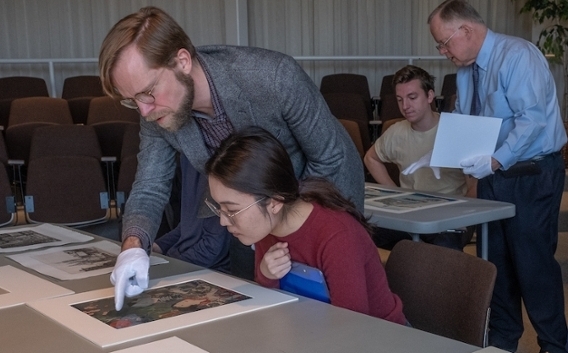

Museums Miami Center brings entities under one umbrella
Director says museums and collections are "at the heart of student learning"
By Margo Kissell, university news and communications
Miami’s seven museums and museum-like entities have joined forces under one umbrella organization, the Museums Miami Center.
The Council of Academic Deans approved the request to establish the interdisciplinary university center.
“The center is a strong addition to our education, research and outreach endeavors and fits well within the mission of the university,” Jim Oris, vice president for research and innovation and dean of the Graduate School, wrote in a letter to the steering committee. The initial agreement is for three years.
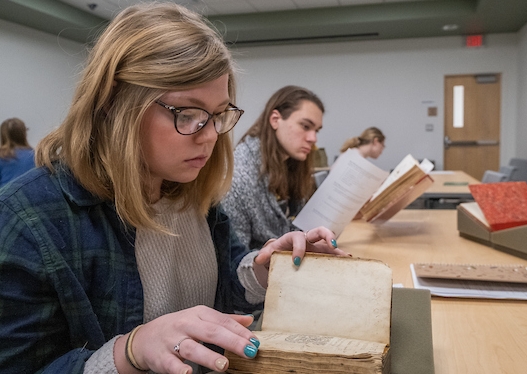
Miami students examine books and historical documents that are part of the Special Collections & University Archives.
The center isn’t a physical place but rather a collaborative endeavor among entities, much like the Humanities Center and other centers on campus.
Museums Miami allows for more collaboration and access among faculty members and staff who regularly make use of Miami's object-based collections in their teaching and research. It serves as a network among the many collections and spaces at Miami.
The center comprises the Miami University Art Museum, Hefner Museum of Natural History, Limper Geology Museum, McGuffey House and Museum, the Conservatory at Miami Hamilton, University Libraries’ Special Collections & University Archives (including the Myaamia Collection, Oxford College Archives and Western College Memorial Archives) and the Turrell Herbarium.
Eventually, the organization will incorporate other formal and informal collections on campus, such as anthropology, art (Hiestand Galleries), athletics, computer science, English and music, among others.
Incorporating museums into “the very fabric of the university”
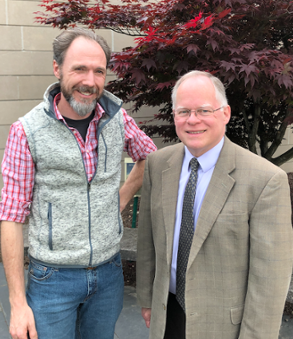
Steve Sullivan, left, and Robert Wicks
The steering committee chose Robert Wicks, director of the art museum and professor of art history, to serve as Museums Miami’s inaugural director and Hefner Museum director Steve Sullivan as its associate director.
Wicks said they, along with the eight-member steering committee, support a vision that incorporates museums into “the very fabric of the university.” Their message is simple: Museums and collections are at the heart of student learning.
Other stated goals for Museums Miami include:
• Positioning Miami’s museums and collections as an integral part of the educational experience at Miami in ways that benefit all majors at the undergraduate and graduate levels.
• Providing increased access to physical collections through comprehensive digital catalogs and an integrated interface that allows Miami’s independent collections to be searched simultaneously.
• Formally integrating the wide-ranging contributions of the museums and material collections into the institutional strategic plan.
Banding together for greater impact
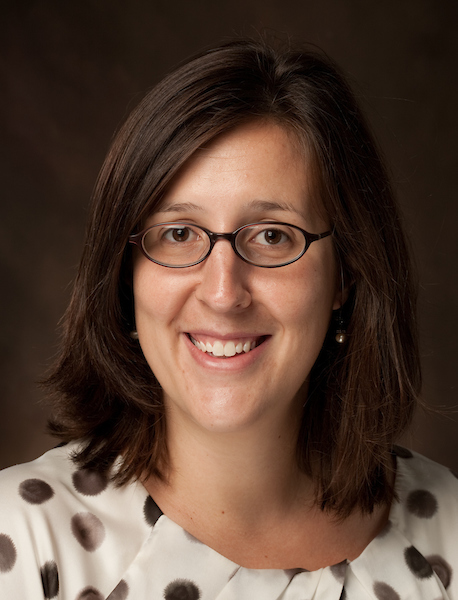
Pepper Stetler
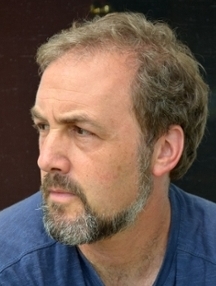
Steven Conn
Wicks credits Steven Conn, W.E. Smith Professor of History, for sharing his vision of how museums and object-based research at Miami could be even more impactful.
“I have done a fair bit of scholarly work on the history of museums, and Miami’s museums were one of the things that excited me about coming to the history department in 2015,” Conn said.
“But as I settled in here, I was struck that the museums were not reaching their potential for teaching, for research or for broader public engagement. It seemed to me that by banding together through the center, we could make the whole greater than the sum of parts.”
Conn and Pepper Stetler, associate professor of art history and associate director of the Miami University Humanities Center, assembled a group of interested faculty and staff with a goal of forming the umbrella organization. Both serve on the steering committee.
Conn said the center “signals that the museums and collections are central, not peripheral, to what Miami is all about” and will enable them to explore bigger opportunities that would be unavailable to individual museums and collections.
Exposing students to object-based learning
Some faculty, including Stetler and Conn, actively use object-based learning in their classes already.
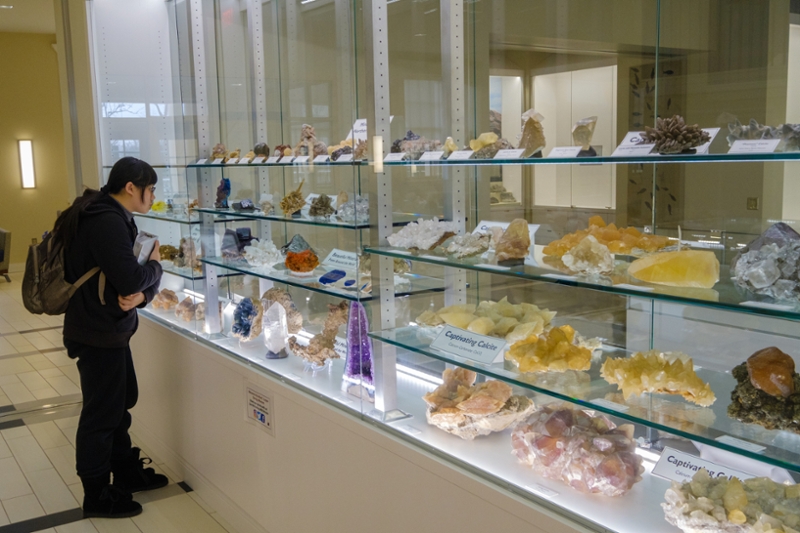
A student looks at mineral specimens outside the Limper Geology Museum (photo by Scott Kissell).
Stetler uses the art museum's collections in many of her classes, such as this semester’s ART 389: History of Photography. For instance, students met at the art museum to look at the many examples of 19th-century photographic portraiture in the collection.
“The experience of physically and materially studying these early examples helps my students critically and historically examine their own digital photographic practices in the 21st century,” she said.
Conn teaches a class in which students are putting together a history of Miami using objects from collections around campus.
“This is a really interesting experiment as they think about how objects work as historical sources, and it is exposing them to the real richness of the collections,” he said. “It opens up a different way of thinking for them — about the university and about history. And there is a realness to it.”
